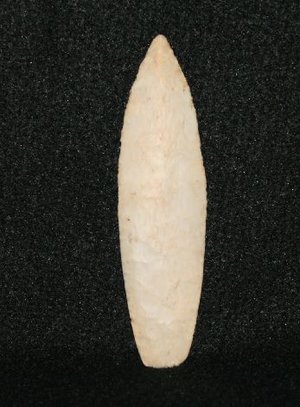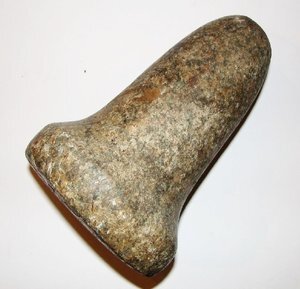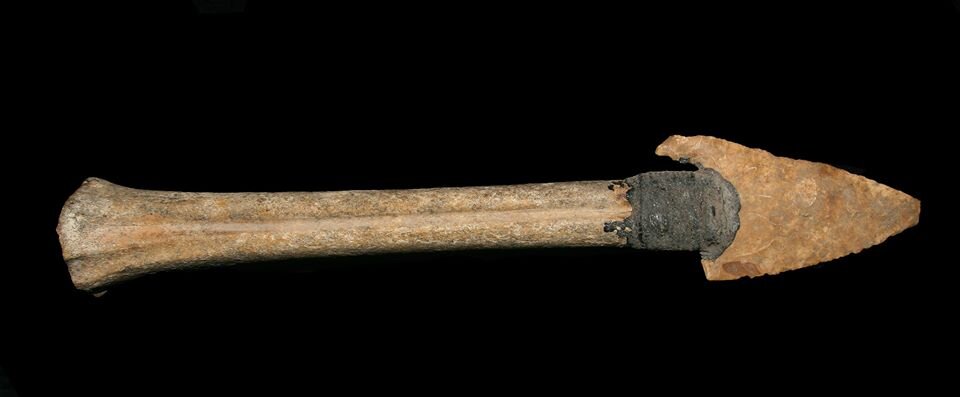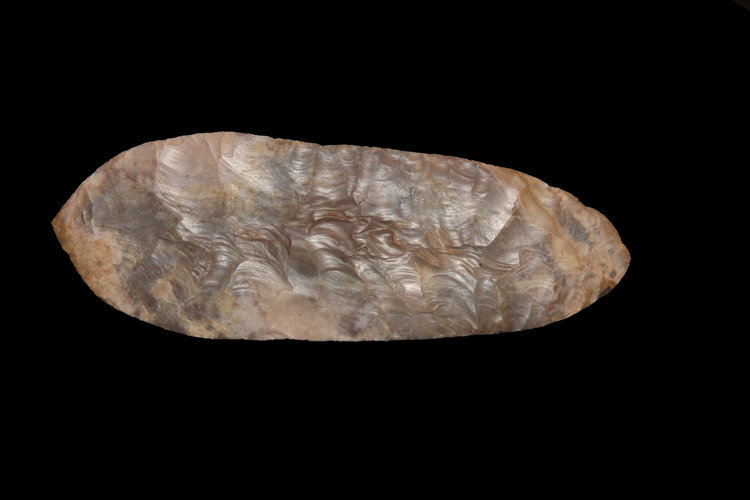Ancient Food Processing Tools
In the beginning of early people, food is the most essential and critical aspect of life. It can be easy for us today to think of food as a simple thing we need, but only think about it when we need it. Our early ancestors, 23,000 years ago, considered the question of food as a way of life! There is a progression through time of obtaining and processing food; we wouldn't be able to make a PB & J sandwich without this long adaptation starting with the Paleoindians.
Paleo
People began as hunter-gathers persisting in small groups of 10-20, predominantly reliant on large game animals available within the region they migrated in. This period lasted from roughly 22,000 BC to 8,000 BC. Paleoindians were nomadic people, migrating across the land following and hunting herds of animals. They spent nearly all their time gathering food and other vital resources. At the beginning of this era, they focused attention on large game such as the "Mega-Fauna," which included the mastodons, bison antiquus, and ground sloth, all are extinct today. As the period went on, and these animals dwindled due to hunting and changing environment, groups began to focus on smaller game. It is essential to consider that these changes could be dramatically different in different regions of the continent. Varying nomadic groups had different food resources.
The stone tools they left behind reveal a part of the life they lived to us today. Our collection has artifacts like this pictured Agate Basin dating ca. 8,500 BC to 8,000 BC. This flint knife was found in Wyoming. During this time, people used this knife, and many others like it to hunt. In fact, many of these knives are found at kill sites. The name of this point, "Agate Basin," is actually named after a communal bison kill site in Wyoming where more than 169 projectile points have been found. They would have been used as spear tips or knives, so they have a high concentration at a kill sight rather than a habitation area. Other points unique to the Americas are the Clovis, which were also used as spear tips or knives. They have a groove, or flute channel, in the middle, making it easier to attach to a handle.
These flint blades were critical for obtaining food and other resources. Once brought down with a projectile, a large animal had to be butchered on sight to carry resources back to camp. They would have taken the meat for food, the hide for future outer protection (such as blankets or clothing), and even bones for crafting other tools. The blades were constantly re-sharpened until rendered unusable.
Archaic
It was a gradual transition into what we call today the Archaic period, dating from around 8,000 BC to 1,000 BC. With increasing human populations, climate changes, and the extinction of large herd animals, humans began to change their mindsets to other food ideas. This period is marked by new living adaptations such as the larger, more sedentary groups and a more varied diet, including nuts, roots, berries, and tool innovation. New tools were innovated to aid in this transition to incorporate more plant-based diets, such as a pestle pictured. In fact, by the Middle Archaic period, people would bulk-store nuts for the winter months by pounding, sieving, and then boiling them to separate the nutmeat from the shell and extract oils, which were critical for nutrition. Like the hickory nut, some nuts fell from the trees in October and dried out naturally, which would split the shell open. People had to be quick to collect them before any other animal got to them. People focused on gathering fruit, seeds, and nuts to last for the colder months in the fall. It was harder to find food in Spring, but fish were available with newly innovated netting and fish hooks. In the Summer, a more vast abundance of fish became available along with mussels.
People still relied heavily on hunting and meat as their primary source of nutrition. Hunting became easier with new tools like the atlatl, netting, traps, and further development of points. Another exciting artifact within our collection is the Shumla point with an attached deer bone handle dating to about 2,250-650 BC. This very rare knife was found in a dry shelter in western Texas. The dry, arid climate allowed the knife to stay intact; it is attached with sinew and asphaltum. The use of the deer's leg bone and sinew as the handle and binding of this knife speaks to the Archaic mindset of not letting anything go to waste.
By the Late Archaic period, people began to cultivate foods, which would transition the populations into the Woodland period with their new knowledge. People East of the Mississippi River started to cultivate related pigweed species. Looking further south, we see Mesoamerican cultures growing corn or maize. People of South America began cultivating wild potato species.




Woodland
This transition into a greater emphasis on food production, rather than sole hunting and gathering, became known as the Woodland Period. Scholars consider this to be a period of Mound Builders. It was a prosperous time for Ancient Americans, rising around 1000 BC and lasting to 900 AD. People established settlements, agricultural production, and greater emphasis on social connections. This period saw cultures, such as the Adena and Hopewell, learning to build earthen burial and ceremonial mounds, which is why people know this as the period of Mound Builders. Woodland people also utilized agricultural techniques and produced large maize varieties and other crops as a substantial part of their food source. The Sweetwater Biface, one of the most recognizable flint artifacts ever found, came from this era. It is considered to be one of the thinnest flint artifacts ever recovered. Located in Nolan County, Texas, by Mr. Roland Kamerin in 1986, it measures just under 10 inches long and less than 5 mm thick.
Food has always been a critical and essential part of human life. However, as we look back into the early days of the human experience, we can see a new sense of vitality in early food sources. Tracing the process through history, it is impressive how incredibly innovative our ancient ancestors were. Next time you wonder what you're going to make for lunch that day, you may also consider how your ancient ancestors would have answered the same question.
Blog by Jazlyn Sanderson
References:
Hill Jr., Matthew E. “A Moveable Feast: Variation in Faunal Resource Use among Central and Western North American Paleoindian Sites.” American Antiquity. 72 No. 3 (Jul., 2007): pp. 417-438
MuseumLink Illinois. “Archaic – Economy – Food.” Illinois State Museum. Accessed October 9, 2020. http://www.museum.state.il.us/muslink/nat_amer/pre/htmls/a_food.html
The Editors of Encyclopaedia Britannica. “Archaic Culture.” Encyclopædia Britannica. Published May 28, 2019. https://www.britannica.com/topic/Archaic-culture
Trubitt, Mary Beth. “Reconstructing Ancient Foodways.” Arkansas Archeological Survey. Revised February 2007. http://archeology.uark.edu/indiansofarkansas/index.html?pageName=Ancient%20Foodways
“Lifeways: Seasons and Subsistence.” The East Steubenville Site: West Virginia’s Panhandle Archaic Culture. Updated January 1, 2006. http://www.wvculture.org/shpo/es/lifeways.html
“Fossilized Footprints.” National Parks Service, February 4, 2024. https://www.nps.gov/whsa/learn/nature/fossilized-footprints.htm

